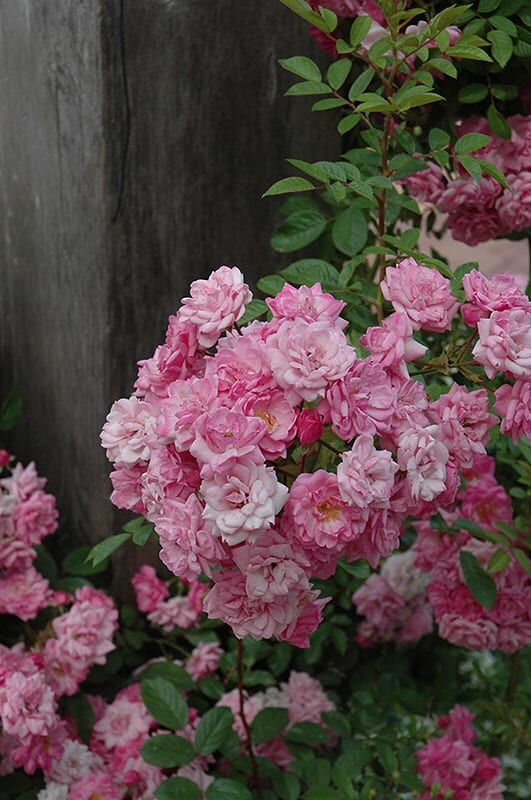Peggy Martin Rose
This elegant variety is a climbing rose producing showy clusters of beautiful blush pink flowers; excellent for trellises, or along garden walls; a vigorous grower that is easy to maintain; very few thorns; protect new growth from hard freezes in spring.
Please contact your local store for product availability.
Find a garden center near you.
Other Species Names: Hurricane Katrina Rose
Plant Height: 180 in.
Spread: 72 in.
Evergreen: No
Plant Form: spreading
Summer Foliage Color: dark green
Minimum Sunlight: full sun
Maximum Sunlight: full sun
Peggy Martin Rose features showy clusters of fragrant pink flowers with white overtones and gold eyes along the branches from late spring to mid fall. The flowers are excellent for cutting. It has dark green foliage throughout the season. The oval compound leaves do not develop any appreciable fall color. The fruit is not ornamentally significant.
Peggy Martin Rose is a multi-stemmed deciduous woody vine with a twining and trailing habit of growth. Its average texture blends into the landscape, but can be balanced by one or two finer or coarser trees or shrubs for an effective composition.This woody vine will require occasional maintenance and upkeep, and is best pruned in late winter once the threat of extreme cold has passed. It is a good choice for attracting bees to your yard. It has no significant negative characteristics.Peggy Martin Rose is recommended for the following landscape applications;Mass PlantingHedges/ScreeningGeneral Garden Use
Peggy Martin Rose will grow to be about 15 feet tall at maturity, with a spread of 6 feet. As a climbing rose, it can be leggy near the base and may be concealed by underplanting with lower-growing facer plants. It should be planted near a fence, trellis or other landscape structure where it can be trained to grow upwards on it, or allowed to trail off a retaining wall or slope. It grows at a fast rate, and under ideal conditions can be expected to live for approximately 30 years.This woody vine should only be grown in full sunlight. It does best in average to evenly moist conditions, but will not tolerate standing water. It is not particular as to soil type or pH. It is highly tolerant of urban pollution and will even thrive in inner city environments. This particular variety is an interspecific hybrid.
